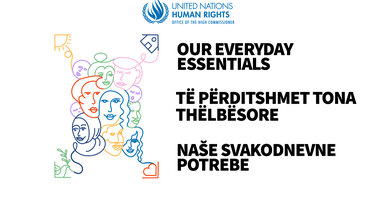7 Dec
2010
Climate change effects on South America depicted graphically in UN report

7 December 2010 – The number of people in Latin America and the Caribbean affected by extreme weather events, including high temperatures, forest fires, droughts, storms and floods grew from 5 million in the 1970s to more than 40 million between 2000 and 2009, the United Nations said today in a report that graphically details the effects of climate change in those regions.
Using charts, graphs and maps, the report entitled “Vital Climate Change Graphics for Latin America and the Caribbean,” produced by the UN Environment Programme (UNEP), depicts the major signs of climate change in the region, its physical impacts and calculates current levels of greenhouse gas emissions and possibilities for mitigation.
Adverse weather conditions have cost the region more than $40 billion over the past decade, according to the report, which was unveiled at the UN climate change conference in Cancún, Mexico.
Produced in collaboration with the Sustainable Development and Human Settlements Division of the Economic Commission for Latin America and the Caribbean (ECLAC) and UNEP’s Polar Research Centre, the report also forecasts future climate scenarios for the region.
Graphics show that by 2050, rises in the temperature of ocean surfaces will result in more frequent bleaching of coral reefs, with a negative impact on tourism and fishing. In 1970, only a small number of countries in Latin America and the Caribbean were home to mosquitoes that transmit yellow fever, dengue fever and malaria. However, by 2002, the vast majority of the region was affected by these tropical diseases, the report says.
It also reveals that although the contribution of Latin America and the Caribbean to greenhouse gas emissions represents only 8 per cent of global emissions – excluding those related to land use change – the expected changes in climate during the present century will have a significant impact on the region.
Basing facts on historical analysis of variables such as temperature, precipitation and sea levels, the report outlines for decision makers, academics and the general public the effects and causes of these climate change phenomenon. It shows that countries in the region will require resources and assistance to reduce their vulnerability and enhance their resilience to the harmful impacts of climate change.
The report also highlights the growing need for regional coordination and sharing of best practices in drawing up sustainable policies and designing technologies and investment options to reduce harmful gas emissions through expanding the sources of clean and renewable energy, increasing energy efficiency and adopting energy-saving measures.
The graphics show the need for rapid advances in reducing emissions resulting from deforestation and forest degradation in order to reverse the negative trends.
The report notes that many countries in the region have already initiated policies, investment strategies and solutions to deal with climate change, but those programmes require strengthening at both national and regional levels.
 UN
UN United Nations Peacekeeping
United Nations Peacekeeping





